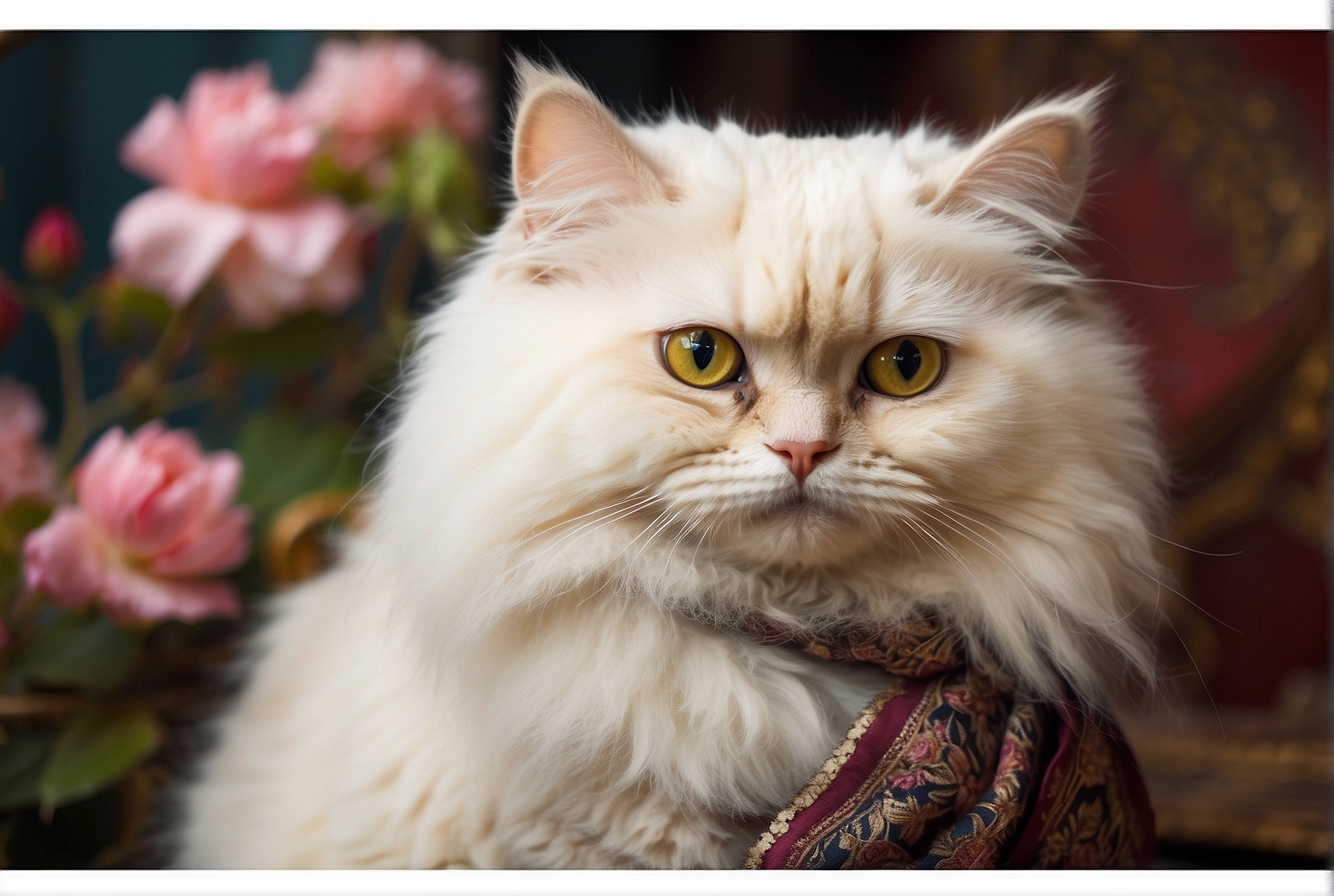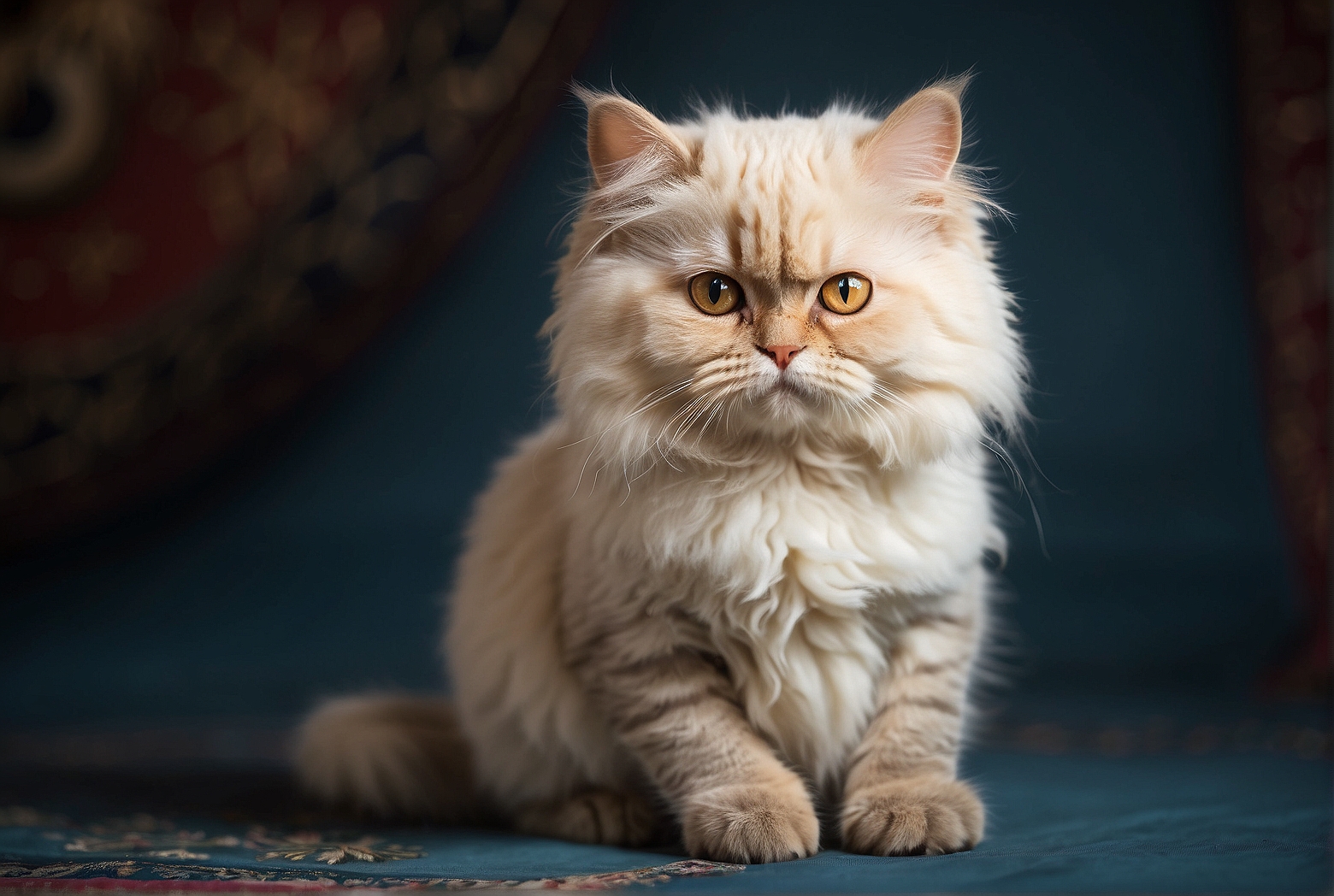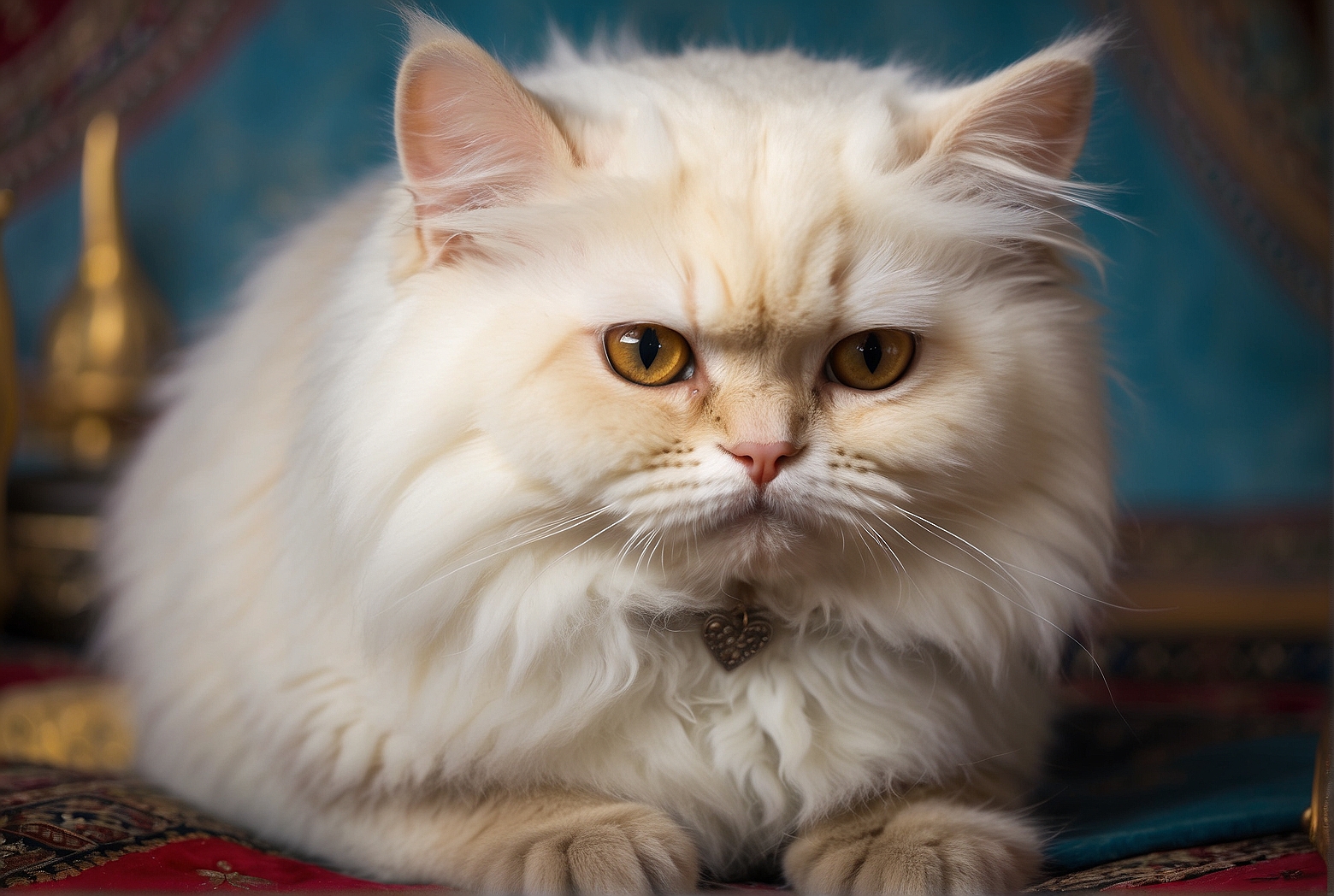Have you ever wondered about the rarity of Persian cats? With their distinct features, such as a luxurious long coat, a round face, and captivatingly large eyes, it’s hard not to be intrigued by these beautiful felines. In this article, we explore the question of whether Persian cats are truly rare and uncover fascinating information about their popularity, breeding history, and unique characteristics. Prepare to be amazed as we unravel the mystery surrounding these majestic creatures.
Introduction
Overview
Persian cats are a beloved and exquisite breed that has captured the hearts of cat lovers all around the world. Their luxurious long coats, distinctive facial features, and gentle temperaments make them highly sought after pets. In this article, we will delve into the origins of Persian cats, explore their distinctive features, and discuss the challenges associated with breeding them. Additionally, we will take a closer look at the factors that contribute to their rarity and examine some of the rare Persian cat varieties. Lastly, we will touch upon the organizations that promote and support this breed, as well as the price range associated with owning a Persian cat.
Popularity
It is undeniable that Persian cats hold a special place in the hearts of cat enthusiasts. Their popularity can be attributed not only to their physical beauty, but also to their calm and affectionate nature. Persian cats often make excellent companions, as they are known for their gentle demeanor and their ability to form strong bonds with their human caregivers. The demand for these feline beauties has consistently been high, leading to their status as one of the most popular cat breeds worldwide.
Origins of Persian Cats
Ancient History
The origins of Persian cats can be traced back to ancient times, specifically to the region that is now known as Iran. It is believed that these regal felines were first introduced to Europe by Italian traders during the 17th century. However, their history predates this timeframe, as evidence of cats resembling Persians has been found in the art and literature of ancient Persia, now modern-day Iran. These cats were highly esteemed and were often depicted in lavish Persian carpets and manuscripts, symbolizing luxury and elegance.
Development of the Breed
The development of the Persian breed as we know it today began in the late 19th century. As cat shows gained popularity, breeders sought to refine the characteristics of Persian cats, focusing on their distinctive physical appearance and elegant demeanor. Through selective breeding, breeders were able to achieve the desired traits, such as the round head, short muzzle, large round eyes, and a profuse long coat that typify the Persian breed. These intentional breeding efforts laid the foundation for the breed standards that are upheld by cat associations today.
Distinctive Features of Persian Cats
Physical Appearance
One cannot help but be captivated by the striking physical features of Persian cats. They have a round head with a pronounced forehead and a short, broad nose. Their eyes are large and expressive, with colors ranging from deep blue to brilliant gold. The Persian’s body is sturdy and compact, with a muscular build and short, thick legs. One of the most notable features of Persian cats is their glorious coat, which is long, silky, and luxuriously soft to the touch.

Coat Variations
The coat of a Persian cat is a defining characteristic that sets them apart from other breeds. There are several recognized coat variations within the Persian breed, including solid, shaded, smoke, tabby, tortoiseshell, and bi-color patterns. Each coat variation adds its own unique charm, making every Persian cat a stunning individual. The care and maintenance of the Persian’s coat require dedication, as regular grooming is essential to prevent matting and keep the coat in pristine condition.
Breeding Challenges
Selective Breeding
While selective breeding has played a crucial role in creating the Persian’s desired traits, it has also presented challenges for breeders. The emphasis on certain physical characteristics, such as the flat face and short muzzle, has resulted in health issues among some Persian cats. Breathing difficulties, dental problems, and eye conditions are more common in this breed compared to others. Responsible breeders are continuously working to strike a balance between maintaining the breed’s appearance and promoting optimum health.
Health Concerns
Due to the distinct features of their breed, Persian cats are more prone to certain health concerns. One of the most notable issues is brachycephalic airway syndrome, which can cause breathing difficulties due to the compressed structure of their faces. Additionally, Persians may experience dental issues, particularly overcrowded or misaligned teeth. Eye conditions, such as cherry eye and entropion, are also more prevalent in this breed. Regular veterinary care and diligent attention to their specific needs are essential to ensure the overall health and well-being of Persian cats.
Popularity and Demand
Celebrity Ownership
Persian cats have gained a significant following among celebrities, further cementing their popularity. Well-known personalities such as Taylor Swift, Karl Lagerfeld, and Ed Sheeran have all been proud owners of Persian cats, showcasing their beauty and charm to millions of fans. The allure of owning a cat that shares the same breed as these beloved public figures has undoubtedly contributed to the high demand for Persian cats.
Social Media Influence
In this digital age, social media platforms have become a powerful influencer of trends and popular culture. Numerous Instagram accounts dedicated to Persian cats have amassed massive followings, showcasing these enchanting felines in all their splendor. The visually appealing nature of Persian cats, combined with their innate photogenic qualities, has made them a favorite subject for viral cat memes and viral videos. As a result, the demand for Persian cats has continued to soar, with many people aspiring to have their very own internet-famous feline companion.
Factors Affecting Rarity
Limited Breeding Programs
The rarity of Persian cats can be attributed, in part, to the limited number of breeding programs dedicated to producing high-quality Persians. Responsible breeders carefully select their breeding stock, ensuring that they adhere to the breed standards and prioritize the health and well-being of their cats. However, this approach means that the number of Persian kittens available for adoption is relatively limited, contributing to their rarity.

High Standards
The strict breed standards set by renowned cat associations, such as the Cat Fanciers’ Association (CFA) and The International Cat Association (TICA), also contribute to the rarity of Persian cats. These organizations have established rigorous criteria for judging and breeding Persian cats, necessitating breeders to uphold exceptionally high standards. This dedication to preserving the breed integrity, while commendable, restricts the pool of Persian cats that meet these exacting standards, further enhancing their rarity and desirability.
Rare Persian Cat Varieties
Color-Point Persians
Color-point Persians, also known as Himalayans, are a rare and stunning variation of Persian cats. They possess the distinctive markings and coloration commonly associated with the Siamese breed, combined with the Persian’s luxurious long coat. The striking contrast between their vivid blue eyes and their color-pointed coat creates a breathtaking visual spectacle. Due to the specific breeding required to produce these captivating felines, color-point Persians are highly coveted and often sought after by enthusiasts.
Odd-Eyed Persians
Odd-eyed Persians are a captivating variation of the Persian breed, characterized by having one eye of one color and the other eye of a different color. This unique phenomenon occurs due to a genetic mutation. The striking contrast between the two eye colors adds to the allure of these rare Persians. The mystique and beauty of odd-eyed Persians make them highly prized by cat lovers who appreciate their rare aesthetic appeal.
Persian Cat Organizations
Cat Fanciers’ Association (CFA)
The Cat Fanciers’ Association (CFA) is the world’s largest registry of pedigreed cats and recognizes Persian cats as one of their most prestigious breeds. The CFA sets breed standards, organizes cat shows, and promotes responsible cat ownership. Breeders and exhibitors partake in CFA events to showcase their Persian cats and compete for titles and recognition. The CFA’s dedication to advancing and preserving the Persian breed has played a significant role in elevating their popularity and desirability.
The International Cat Association (TICA)
The International Cat Association (TICA) is another influential organization that recognizes and supports Persian cats. TICA maintains breed standards, holds cat shows and competitions, and offers registration services for pedigreed cats. Their commitment to promoting high standards, encouraging responsible breeding practices, and fostering a sense of community among Persian cat enthusiasts has contributed to the preservation and appreciation of this exquisite breed.
Price Range of Persian Cats
Show-Quality Pedigree Cats
Show-quality Persian cats, which conform closely to the breed standards set by organizations like the CFA and TICA, can fetch a substantial price in the market. The price range for show-quality Persian cats can vary widely depending on factors such as lineage, coat color, and the reputation of the breeder. The rarity and desirability of certain coat colors and patterns can significantly impact the price, with unique and rare variations commanding higher prices.
Pet-Quality Non-Pedigree Cats
For those seeking the companionship of a Persian cat without the intention of showing or breeding, pet-quality Persian cats are a more affordable option. These cats may exhibit minor deviations from the breed standards, such as less pronounced features or less desirable coat patterns. However, they still possess the endearing personality and undeniable charm that Persian cats are known for. The price range for pet-quality Persian cats is generally lower than their show-quality counterparts but can still vary depending on the breeder and other factors.
Conclusion
Summary of Rarity
In conclusion, Persian cats are undoubtedly a breed cherished for their distinctive features, gentle temperament, and undeniable beauty. Factors such as limited breeding programs, high breed standards, and the influence of popular culture contribute to their rarity and desirability. Rare variations like color-point Persians and odd-eyed Persians captivate enthusiasts with their unique aesthetics. Organizations like the CFA and TICA play a significant role in upholding breed standards and supporting the Persian breed.
Appreciation and Love for Persian Cats
Persian cats have charmed their way into the hearts of cat lovers worldwide, emerging as one of the most popular and beloved breeds. Their regal appearance, serene disposition, and captivating personalities continue to capture the imaginations of people from all walks of life. Whether it’s their luxurious coat, striking facial features, or gentle nature, Persian cats have earned their reputation as treasured companions and symbols of elegance and sophistication. So, if you find yourself fortunate enough to share your home with one of these rare and enchanting felines, cherish the experience and revel in the beauty of the Persian cat.
